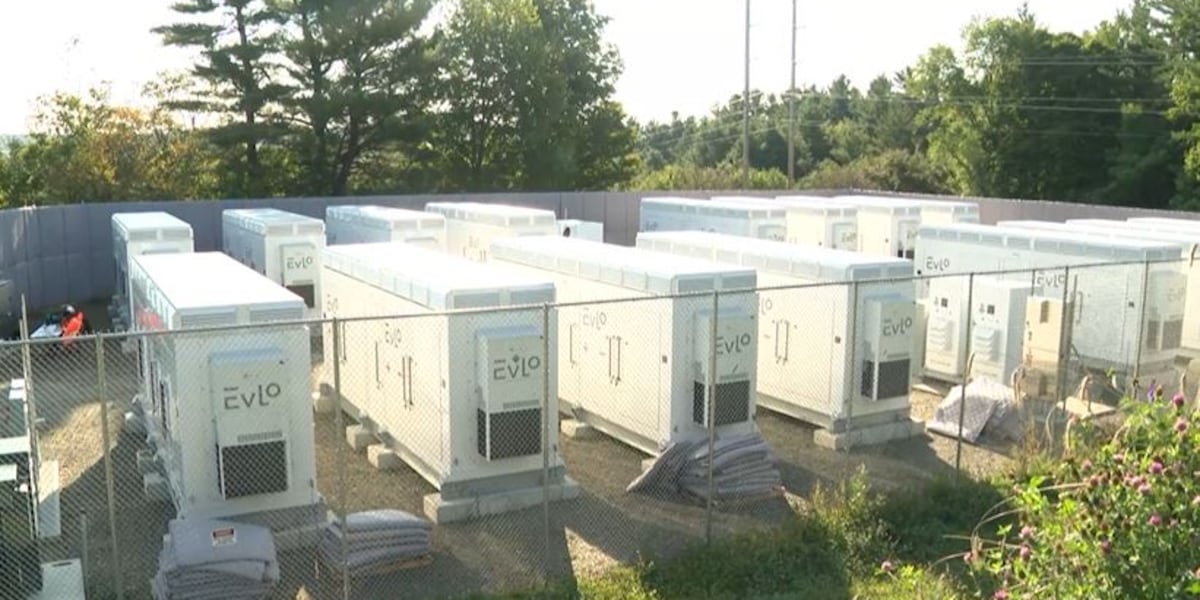Troy battery storage project aims to save excess renewable power
September 26, 2024

BURLINGTON, Vt. (WCAX) – A tiny Vermont town is plugging into a first-of-its-kind energy solution.
The town of Troy and surrounding areas are rich with renewable energy sources that often produce more power than the grid can handle. That’s where this new battery system comes in.
On a grassy clearing off Route 105 West in North Troy, a low hum mixes with bird song and passing cars.
It’s coming from a 3-megawatt, 12-megawatt-hour, utility-scale battery storage project that soaks up excess energy to be used during peak demand – enough to power 600 homes for a full day.
“We were able to use it in July, which so far has been the hottest, the biggest use day in New England for the year. So it’s already been showing its value,” said Rebecca Town with Vermont Electric Cooperative.
After testing this summer, the years-long project just went online.
Vermont Electric Cooperative and Green Mountain Power jointly own and operate the project.
It’s a $6 million endeavor – with the Department of Energy covering 2 million, and Vt. Electric Cooperative and GMP splitting the rest.
Hydro-Quebec subsidiary Evlo Energy Storage commissioned the project as its first battery energy storage system in the United States.
Troy was a strategic landing spot. Surrounded by solar, hydropower, and Kingdom Community Wind Project, Towne explains that there’s often more renewable energy produced than the grid can transmit.
“When they see the transmission lines reaching their maximum, they start reaching out to the larger generators and saying, Hey, we can’t take all of this renewable generation onto the grid and ask them to reduce output or curtail.,” said Towne.
To prevent curtailment, or reducing energy generated, the battery system stores any excess energy the grid can’t transmit.
Then, during peak demand, it discharges that energy back to the grid.
Towne says it’s an innovative way to take full advantage of renewable energy generation and avoid falling back on carbon, which can come at a higher cost for customers.
“It’s about maximizing the renewable energy that we have, which is an important piece of making sure that we’re able to cost-effectively achieve that future,” said Towne.
Peter Sterling with Renewable Energy Vermont echoes Towne, saying projects like this could bring the state closer to meeting the goals laid out in the clean heat standard, all while prioritizing customers.
“When you’re driving load growth, you’re going to want to make sure you have a stable source of power. We have laws that say that should be renewable and this is the best way to help rate payers and have renewable energy at the same time,” said Sterling.
There are dozens of megawatts of battery storage across the state, but Towne says this is the only project pairing both peak management and curtailment.
Sterling believes we could be seeing more batteries like this on our landscape as Vermont looks for ways to grow and capitalize on renewable energy.
“I think the future really is large solar projects will be paired with the energy storage more and more frequently moving forward, especially as load grows,” said Sterling.
Towne says Vt. Electric Cooperative is currently hashing out the details of another battery project in South Hero focused on peak management.
Copyright 2024 WCAX. All rights reserved.
Search
RECENT PRESS RELEASES
Related Post




